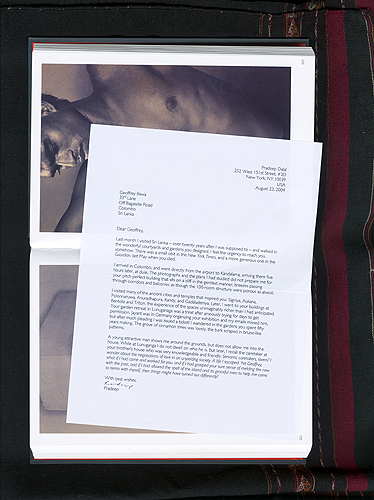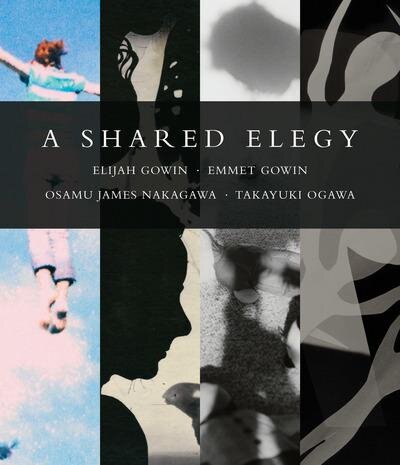






"I NEED MY MEMORIES. THEY ARE MY DOCUMENTS."
September 11 – October 31, 2015
Despite the slipperiness of memory, Louise Bourgeois insists that they are her documents and adds, “You have to differentiate between memories. Are you going to them or are they coming to you? If you are going to them, you are wasting time. Nostalgia is not productive.” Documentation is often done to create an archive, a remembrance, but Bourgeois reverses this process choosing to rely on the mutable and the uncertain. The paradoxical place between memory and documents is the location of the works in this exhibition.
sepiaEYE is pleased to present “I need my memories. They are my documents.”, (Ulf Küster, Louise Bourgeois, P. 43) curated by Nandita Raman. This group exhibition features photographs and videos by five artists who work with a repository of existing visual materials.
“I use my fingers, palms, knuckles, and arms to grab, place, hold, nudge, jog, sweep, and shake the different components of the photomontage” says Pradeep Dalal, explaining the process of creating his photographic collages, Go West. This DJ-like use of disparate materials on a flatbed scanner erects columns of visual slivers that dissolve into one another after a momentary pause. The use of family snapshots, music album covers, textiles, embroidery, prints of palm trees and flowers in the construction of the collage evokes a tactile experience, and reveals how the process of recollection stitches and layers dissonant moments from the past.
Modernist architecture is a touchstone of Dalal’s work, who received a Master of Architecture from MIT after studying the subject in India. The fictional Bawa Letters are written to the Sri Lankan architect Geoffrey Bawa, known for using regional ideas in contemporary architecture. Using a layered approach, the letters combine background references to philosopher Ananda K. Coomaraswamy and Lionel Wendt’s portraiture; thus mingling the pining for vernacular architecture and symbolism with gay desire.
This playful trait is carried into the works of Vivan Sundaram, who draws on photographic reproductions of statues from the Ajanta Caves (2 BCE -6 CE) and Khajuraho Temples (1 CE). The drawing is sometimes paired with text that Sundaram calls, “infantile jokes.” The candid gesture in this body of work made in the 1960s resonates with the buoyant energy of the artist’s youthful days.
The photograms of Neal Oshima also engage with history albeit in a quasi-scientific vein. The Barot/ Saya series uses traditional shirt, baro, worn by Filipino women with a skirt, saya. These garments, made from hand woven fibers like banana and pineapple plants, were popular in the period preceding the arrival of the Americans in the 19th Century. Oshima culled them from several textile collections, selecting pieces that carried a sense of the original owner of the garments. By placing the object between the light source and the paper, Oshima retains the original scale of the baro. He then combines this objective view of this symbol of Filipino women, with the imperfections of the archaic Kallitype process, which uses hand coated light sensitive paper.
Like the simultaneous opaqueness and translucency of Oshima’s photograms, Osamu James Nakagawa brings together the contrary moments of the past and the present into his triptychs and collages. In Ma: Between the Past Nakagawa juxtaposes his images of Japan and the United States with his father’s and grandfather’s photographs and film strips that were handed down in a suitcase by his father. The repetition of some motifs, like the mountain that is multiplied by its reflection in water and lingers on the neighboring image’s wallpaper, brings attention to movement and displacement. Nakagawa says, “I began to question my own past, not only my memory, but also the unfamiliar past that I had inherited. This series searches for a link to my past and its future passage to my daughter.”
The anticipation of a happening saturates Shambhavi Kaul’s videos. 21 Chitrakoot appropriates chroma-key backdrops of one of the most popular Indian mythological TV series. Spectacular images spring forth from a glorious, more magical time just as the backdrops, the subordinate aspect of cinema, are given a dominant role. Mount Song seems like an extension of 21 Chitrakoot. It uses reconstituted imagery from Hong Kong cinema of the 1970s and 1980s, which was widely distributed in India. Kaul is interested in the set constructions and special effects in these films that depict a much-circulated and easily recognized version of the ancient East. The strangeness of the videos is heightened by the ominous sound that renders a science fiction like spell on them.
"I NEED MY MEMORIES. THEY ARE MY DOCUMENTS."
Exhibition dates: September 11 – October 31, 2015
Opening Reception: Thursday, September 10th, 6-8pm
Talk and Walk-Through with the Exhibition’s Curator, Nandita Raman: Saturday, 31 October 2pm
Press Release (PDF)
Exhibition List (PDF)
sepiaEYE
547 West 27th Street, #608, New York, NY 10001
RELEVANT PUBLICATIONS






